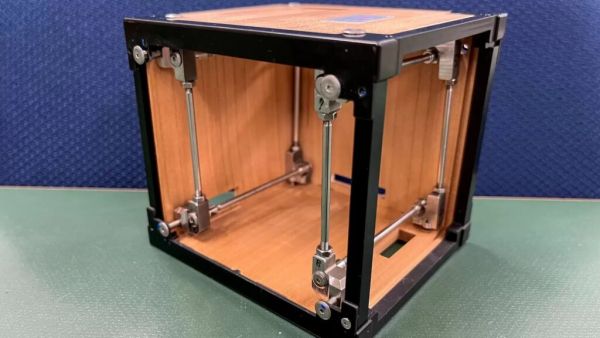
Last year, the world saw something unusual orbiting above – it was a satellite made mostly from wood. Named LignoSat, this small CubeSat spent 116 days circling Earth after being released from the International Space Station. It was built with magnolia wood panels and supported by an aluminium frame; LignoSat was designed to test if wood could hold up in space and offer a more eco-friendly alternative to traditional satellite materials.
LignoSat’s main claim to fame is its wooden structure, which was chosen for more than just novelty. Wood is renewable and, when it burns up on reentry, it leaves behind carbon dioxide, ash and water vapour, rather than the metal particles that can come from aluminium satellites. This matters because those metal particles may harm the ozone layer or disrupt atmospheric processes, while wood’s byproducts are much less concerning.
The satellite’s journey wasn’t entirely smooth. After deployment, the team on the ground couldn’t get in touch with LignoSat. Later analysis pointed to possible issues with the switches that were supposed to activate the satellite and deploy its antenna, or perhaps a software glitch that kept the system from starting up. As a result, the satellite couldn’t send back the data on temperature, radiation and magnetic permeability that the mission was hoping for. Still, the satellite itself stayed in one piece, which was a big step for the idea of using wood in space.
Takao Doi, a former astronaut and now a professor at Ryukoku University, led the project alongside scientists from Kyoto University and Sumitomo Forestry. Despite the communication problems, Doi’s team sees LignoSat as a success for proving that wooden satellites can survive in orbit, according to EOS Magazine. It also helped clear some regulatory hurdles for future wooden spacecraft, since safety reviews are now a bit simpler after LignoSat’s mission.
The team is now working on LignoSat-2, which will be twice as big and come with two separate communication systems, one inside the structure and another on the outside. This way, even if one antenna fails, there’s a backup.
Interest in wooden satellites isn’t limited to Japan. In Finland, Arctic Astronautics and UPM Plywood have built WISA Woodsat, a birch plywood CubeSat with sensors and a deployable camera to watch how wood behaves in space. They are waiting for launch approval from Finnish authorities.
As more satellites fill the sky, finding greener materials is becoming more important. Wood isn’t perfect, as it can be unpredictable and tricky to engineer, but projects like LignoSat show that it’s worth exploring. The hope is that, one day, wooden satellites could help make space more sustainable.